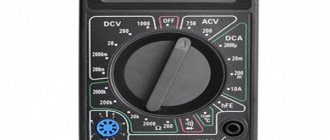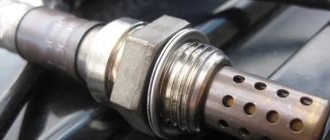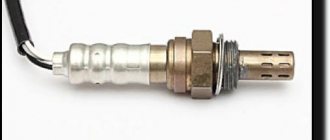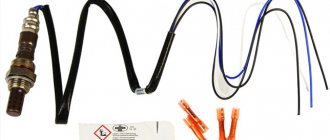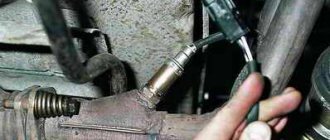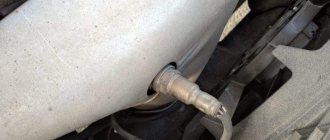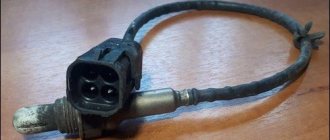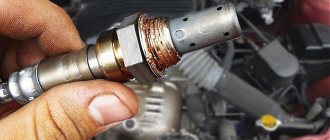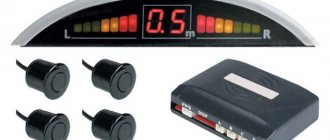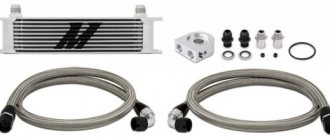All modern cars are equipped with a honeycomb exhaust gas emission neutralizer - a catalyst. It is named after the principle of chemical reactions occurring there, where the noble elements of the filling accelerate and make possible the processing of harmful substances into neutral ones at high speed. But sometimes this useful device itself becomes a source of big problems.
Why fool the oxygen sensor?
The thin structure of the catalyst does not withstand mechanical and thermal overloads over a long period of operation. The temperature here, even in normal mode, reaches a thousand degrees.
Ceramic honeycombs are destroyed, and this causes dangerous phenomena:
- the filling melts, bakes and blocks the free exit of exhaust gases;
- small honeycombs become clogged with soot and other products with the same result;
- the most dangerous thing is that the catalyst, which manufacturers strive to place as close as possible to the exhaust port of the cylinder head to quickly warm up to operating temperature, becomes a source of ceramic dust and debris that gets into the cylinders and destroys engine parts.
In engines that are particularly unreliable for this reason, owners tend to remove dangerous neutralizers even with relatively low vehicle mileage. Due to the use of valuable metals in the design, owners do not want to install expensive original or repair products.
On the subject: Symptoms of malfunction and methods of checking the lambda probe
The consequences are expressed not only in increased exhaust toxicity. The condition of the catalyst is continuously analyzed by the electronic engine control unit (ECU) based on signals from two oxygen sensors (lambda probes).
One of them is located before the catalyst, through which the engine regulates the composition of the working mixture, but the second is entirely responsible for the efficiency of exhaust neutralization.
The readings of the second lambda are studied by the computer, including by carrying out control cycles of heating the catalyst. Its absence will be immediately calculated, the system will go into emergency mode and light up a control indicator on the dashboard. The engine will lose all its characteristics, excessive fuel consumption and other troubles will begin.
To operate without a catalyst, you can change the program of the control unit. The environmental class of the car will be lowered, but otherwise it will be a completely workable option, perhaps even increasing power and reducing consumption; the environment will not come for nothing, but for various reasons not everyone is ready to do this.
Some people want to somehow deceive the standard ECU program by generating artificially incorrect oxygen sensor readings.
The principle of operation of the lambda probe blende
A similar result can be obtained electrically and mechanically.
- In the first case, a signal is generated that the oxygen sensor does not actually produce.
- In the second, all conditions are created for the sensor to give incorrect readings.
Not all systems can be reliably deceived using such primitive methods. Everything is decided by the equipment of a particular car.
Why do you need an oxygen sensor blende?
As I already said, a fake is installed if the catalyst becomes clogged and is removed; it can also be installed if one of the “lambdas is lying”, that is, it is not working correctly. The main disadvantage of the decoy is that it allows an engine that is essentially faulty, from the point of view of environmental standards, to operate. This, as you understand, is beneficial to the owner, but not beneficial from the point of view of environmental pollution, but this issue is quite complex, so I won’t go into too much detail...
That is, in essence, a decoy or lambda probe emulator deceives the ECU, providing it with the information that it wants to see. It corrects the signal that comes from the second sensor, replacing bad data with good data. As a result, the ECU believes that everything is in order and allows the essentially faulty motor to work correctly.
Mechanical blende of the exhaust system catalyst
The simplest way is to remove the oxygen sensor from the controlled area at some distance by installing it on a spacer bushing.
The active element begins to work in a zone where the composition of gases is somehow averaged, the direct relationship between the actions of the ECU and the response of the sensor disappears, which the simplest programs perceive as a sign of normal operation of the catalyst.
Blueprints
The spacer is a metal sleeve with threaded ends. The thread parameters correspond to the sensor used. On the one hand, the thread is internal, the lambda probe housing is screwed into it, and on the other, it is external for placement in the threaded fitting of the exhaust tract behind the catalyst.
A hole is drilled along the axis of the bushing for the passage of gases to the active element. The bushing parameters will be the diameter of this channel and the distance at which the sensor moves away from the gas passage pipe. The values are selected experimentally; the necessary data is easy to find for specific engine models.
More advanced spacers are equipped with catalyst elements. In this case, the main flow moves directly to the outlet, and the oxygen sensor receives only gases that have passed through the microcatalyst.
The signal will differ from the standard one, but many systems accept it as normal operation. Except for those cases when the ECU wants to warm up the catalyst, and the insert in the adapter does not react to this in any way. In addition, this microcatalyst tends to quickly become clogged with carbon deposits and stop working altogether.
Installation location
The catalyst is removed, and a spacer is installed in place of the second oxygen sensor. The diameter of the working hole can be selected according to the most stable operation without lighting the indicator. The sensor is screwed into the thread of the spacer. The exhaust sound is normalized by installing a flame arrester.
Negative consequences
Remember that when choosing to install an emulator, you are always taking a risk. Incorrect installation can lead to various types of malfunctions:
- sensors are irreparably damaged;
- numerous errors appear in the operation of the on-board computer;
- improperly soldered circuitry leads to problems with the controller and electrical wiring;
- If the on-board computer does not adjust the injection correctly, the engine may operate with significant disturbances.
Be careful and clean when working with electronics. Breakage can occur even due to minimal inaccuracy, so flawless adherence to the instructions is, in this case, the key to success. As for purchasing, you should not trust dubious sites, since the parts purchased there either do not bring the expected result or work poorly.
Electronic lambda probe
The electronic method of deceiving the ECU is more accurate. There are many options here, ranging from the simplest, where the sensor signal is smoothed by a filter of a resistor and capacitor, the values of which are selected for a specific ECU, to more complex ones, with an autonomous pulse generator.
Scheme
In the simplest case, the output signal of the oxygen sensor is subject to simulation. In the original, it has quite steep fronts, but if you fill them up using an RC chain, then some blocks will not notice abnormal operation.
More complex ones immediately recognize deception during the first control cycle.
If the sensor's heating thread is faulty, then you will need to install another resistor, since the unit recognizes such a break immediately and always.
Instead of a sensor, you can connect a circuit that generates pulses very similar to the standard ones. Often this option works, but if the ECU is trained to cycle the catalyst, then this snag will not be able to respond adequately.
Installation method
The required radio components or boards are installed either in the cut of the signal wire of the oxygen sensor or instead of it, connecting directly to the connector.
The hole for the sensor can be plugged, for example, with a faulty part.
What are the risks of intervention?
The installation of decoys for LZ is not provided by car manufacturers. Motorists have to deceive the control system, risking the correct operation of a variety of vehicle systems.
If errors are made during installation, problems may arise:
- If the car's computer stops regulating the injection process, problems with the engine may occur.
- If the circuit is soldered incorrectly, the electrical wiring may be damaged.
- During installation of decoys, sensors are sometimes damaged. Moreover, the car owner does not even suspect this, since the system already contains a decoy.
- Installing a fake, as well as flashing it, can lead to a malfunction of the computer.
If your area of interest does not include “communication” with a lathe or soldering iron, any type of blende can be purchased at an auto store. Even novice motorists will not have any problems installing them.
Which lambda decoy is best to use?
There are no perfect dupes. It all depends on the specific car and the features of the implementation of the function of monitoring the condition of the catalyst. In general, the only way out is to change the ECU firmware.
Often this is even provided for in its program; many cars are produced in various versions, including without catalysts. In any case, bypassing the built-in control will not be difficult for an experienced car chip tuning specialist.
Price issues stop many people and force them to engage in all sorts of deceptions. Here you need to clearly understand which methods work with this car, and which will be a waste of time and money. Although you can experiment if you have access to lathes, radio components and a soldering iron.
It is unlikely that you will be able to ruin the car here, but in case of final failure, you should still contact a specialist who will register the program for a lower environmental class.
As an option, you can install a fairly durable and reliable repair catalyst, which, considering the time spent and payment for the services of a specialist, does not look very expensive.
Why do you need flashing?
The most experienced motorists reflash the ECU to block processing of signals from the 2nd sensor. This is a risky decision, since any adjustment to the electronic system often irreversibly changes the settings. It will be almost impossible to go back to factory settings.
You shouldn't do the flashing yourself. It's better to leave it to the experts. They will cancel the transmission of signals from sensors using special equipment. But even then there is no guarantee that after changes in the operation of the control system there will be no problems.
Mechanical method
The method involves using a metal spacer or bushing that is placed between the oxygen sensor and the exhaust pipe. Anyone with some degree of turning skill can do the cool-down on their own. Bronze or heat-resistant steel is used to make the part. In addition, you will need the makeup chart itself, which is easy to find since many people have computers. In his absence, you can use the help of friends or acquaintances.
At the end of the bushing there is a small hole with a diameter of 2 mm for the passage of exhaust gases. It is noteworthy that deciphering the catalyst with your own hands is quite simple. Its design assumes the presence of a ceramic chip with a catalytic coating on the inside.
It's all about the following. Exhaust gases first enter the bushing and pass through the ceramic filler. As a result, a chemical reaction occurs that reduces the concentration of carbon monoxide and hydrocarbons (CO and CH). The gases then reach the oxygen sensor, which transmits normal readings to the ECU.
From a constructive point of view, blende is the same catalyst, only in a much smaller size. To install it, follow the simple instructions:
- Remove the “-” terminal from the battery.
- Get to the position of the second oxygen sensor (after the catalyst), if necessary, perform partial disassembly.
- Disconnect the connector, unscrew the lambda probe with a 22mm wrench and install the bushing.
- Screw the oxygen sensor into the latch and insert the connector.
As you can see, installing the mixture on the catalyst is not as complicated as it might seem at first glance. It is more convenient to carry out all work on a pit or a lift.

